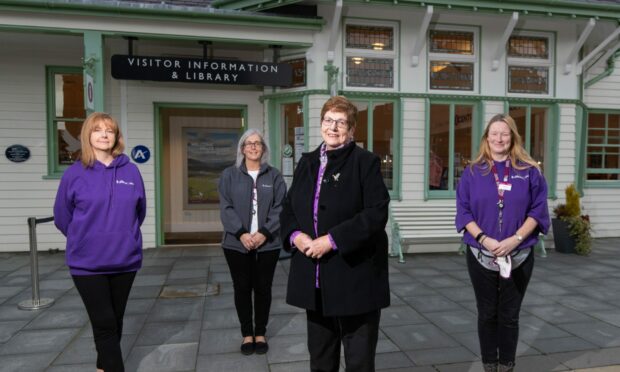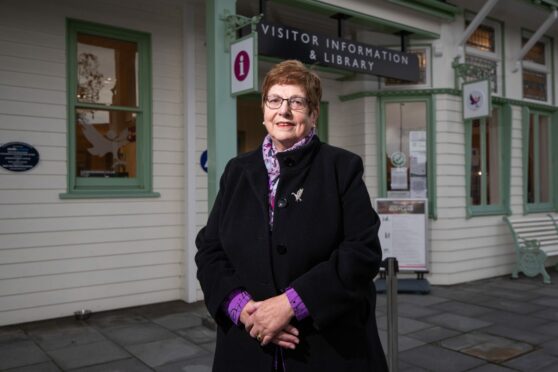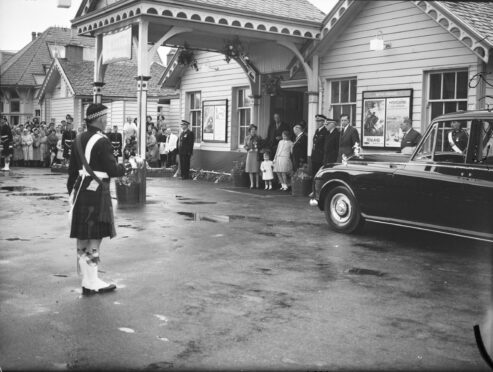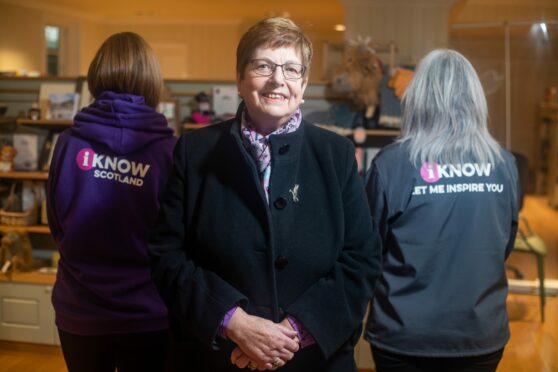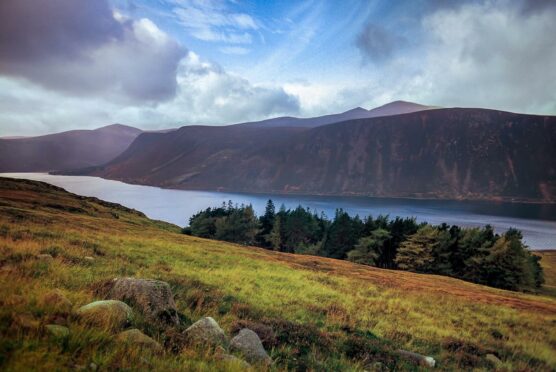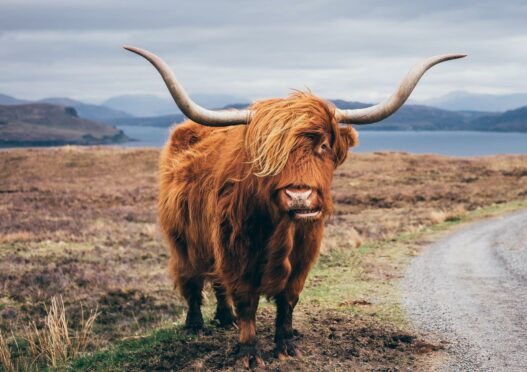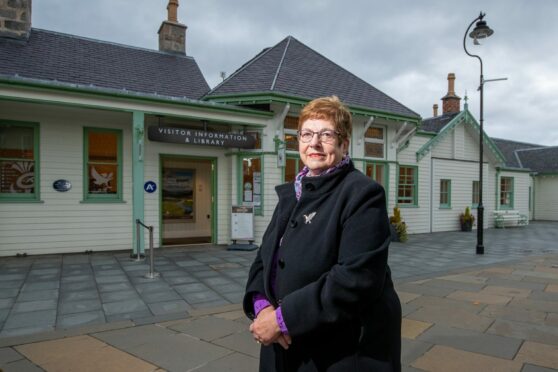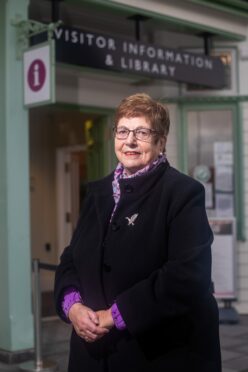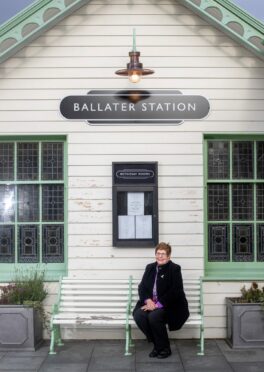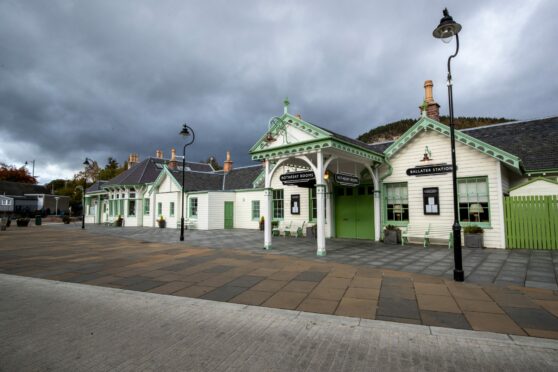“He’s very popular. He’s done a lot for the village and helped it get back together after the floods: he helped the caravan site and he took on a shop as a pop-up cafe – the Rothesay rooms – which he’s now moved up to the station.”
Pat Crawford is discussing the Duke of Rothesay, or Prince Charles, a man she’s met several times in her role as a visitor services assistant with VisitScotland in Ballater’s iCentre, on Royal Deeside.
“He’s often up,” she adds. “They seem to like it a lot up here.”
Pat is Ballater born-and-bred, spending her entire life living and working there, and has now retired after a 21-year career with VisitScotland’s iCentre in the village.
Her working life started as a girl with a paper round at John Menzies, which had a book stall at the then railway station, which has been the heart of the small community since 1866 when it first opened.
As the station closest to Balmoral Castle, it held Queen Victoria’s waiting room, serving the royal family on their annual August visits to the estate.
As a child, Pat remembers the excitement when the local school pupils lined the streets to welcome them.
“The village practically came to a standstill when they arrived,” she said. “The people would all come up to the Station Square because the Queen inspected the Guard of Honour there.”
One hundred years later the railway station closed and the council took up residence, where Pat worked for the next 20 years collecting rents and council taxes.
The council relocated and in stepped the Scottish Tourist Board (rebranded VisitScotland in 2001). At the age of 59 Pat’s local knowledge was priceless and she quickly found a role within the organisation.
Back in her second home, Pat served both community and visitors, rubbing shoulders with celebrities and royalty. Even today, royal family members continue to drop by the iCentre, some of whom she has known since they were children.
“We’ve had a few in the office,” says Pat. “After the station was burned down it was rebuilt and opened in 2018, and Zara Tindall came in with her eldest daughter then, Mia.”
And the unpredictable Deeside weather didn’t faze the royal, says Pat.
“She said, ‘Oh, it doesn’t matter about the weather. We love it here.'”
Pat says most of the royal family she has met at the centre have been similarly down-to-earth, including Prince Phillip (“He said what he thought”), Sophie Wessex (“She was lovely”) and, of course, the Queen herself: “She’s lovely, very nice. If there’s something opening, she’ll come down.”
Not surprisingly, visitors are usually keen to spot the royals on their trips and Pat was tasked with issuing some gentle reminders to over-eager tourists keen to walk around Balmoral estate.
“If the royal family are in residence, out of respect you advise tourists not to go,” she says. “Balmoral is our biggest, most important and most popular tourist place, and people understand they can’t always go walking there, but round Loch Muick a lot of them have met the members of the royal family and have spoken to them, too.”
Tourists arrive from all over the world and there’s one other thing almost everyone wants to see.
“Highland cows,” laughs Pat. “They all want to see Highland cows.”
While many people visit the area hoping to catch a glimpse of royalty or the odd hairy heifer, others visit for golfing, fishing and hiking, and Pat helped them get the most out of their trips, assisting with bookings and accommodation, and answering queries.
Famous faces included none other than comedian Billy Connolly and his wife, Pamela, who often came in to the office when he was in residence at Strathdon or attending the Lonach gathering. Annie Lennox has also visited, as well as Penelope Keith, who interviewed Pat for a television show.
As a loyal and long-term employee with VisitScotland, Pat has seen many changes over the years, from the rise in wild camping to the number of visitors who make their own online bookings rather than use the local tourist office.
“There were no computers when I started,” Pat says. “And tourism has increased – it just got busier and busier. It has changed so much, but I’ve loved it.”
However, the biggest change Pat witnessed was the night disaster struck the tourist office. In May 2015, fire tore through the historic building, destroying the museum, shop, iCentre and restaurant.
And it was Pat who was first on the scene after a call from the alarm company at 1.40am.
“They asked if I could attend as the fire alarm had gone off at the station,” she recalls.
“As we got out from my house, I could see the flames up in the sky. I took my keys with me hoping I would get inside to take stuff out but the Ballater fire brigade said no.
“The wind changed and the fire just ripped right through. The wood was dry so it just burned to the ground.
“So I stood there the whole night. At that time of the morning word spread and there was quite a lot of people who came out and watched it. You couldn’t believe it was happening – it was the main thing in the village, everybody went to station square.”
Over 90% of the building was destroyed but firefighters managed to save a replica of the royal carriage, which took Queen Victoria to Scotland in 1869, and was commissioned at the suggestion of Prince Charles by VisitScotland. Moved by the loss of the old station, he sent his condolences in a letter Pat has kept safe ever since.
The iCentre was rebuilt and reopened in August 2018, and has a new lease of life as tourism slowly recovers from the pandemic.
So what does a tourist adviser do when she retires? She becomes a tourist, of course, and Pat is looking forward to being on the other side of the information desk for once.
“I’m going on a cruise in January to the Caribbean for two weeks!” she smiles.
“I’ll miss the company and the people but I knew it was time to stop because, as I say, it’s changing all the time and I’m getting too old for that now.”
